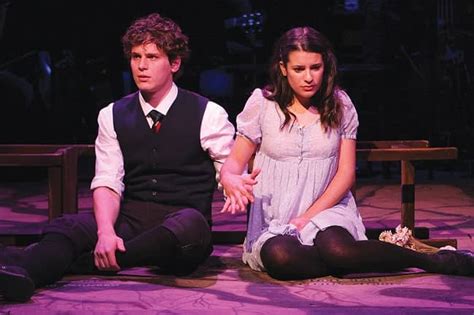The arrival of spring is often associated with renewal, hope, and the awakening of nature from its winter slumber. However, for the characters in Frank Wedekind’s seminal play “Spring Awakening,” the season’s arrival heralds a far more complex and tumultuous experience. This iconic work, penned in the early 20th century, explores themes of adolescence, sexuality, and the struggles of growing up, set against the backdrop of a conservative and repressive society.
At its core, the plot of “Spring Awakening” is driven by the interwoven narratives of its adolescent characters, who are navigating the challenges of puberty, peer relationships, and the often-confusing signals from the adult world around them. The story centers around Melchior, Moritz, and Wendla, each grappling with their own set of issues that are both deeply personal and universally relatable.
Melchior, the charismatic and enlightened outcast, becomes the catalyst for much of the play’s action. His decision to educate his less informed friends about the realities of sexuality sets off a chain of events that exposes the hypocrisy and ignorance prevalent in their community. Moritz, struggling with his own desires and the pressures of conformity, finds himself at a crossroads, torn between the pursuit of knowledge and the fear of societal judgment. Wendla, naive and yearning for experience, seeks answers about the world and her place within it, often finding herself in situations that are beyond her understanding or control.
The driving force behind the plot of “Spring Awakening” is not just the characters’ individual quests for knowledge and connection but also the societal constraints that surround them. The play critiques a system that fails to provide its young people with the information, support, and understanding they need to navigate the complexities of growing up. Through the characters’ experiences, Wedekind highlights the dangers of ignorance, the importance of empathy, and the need for open and honest communication about sexuality, identity, and emotional well-being.
One of the most significant aspects of “Spring Awakening” is its bold confrontation of themes that were considered taboo at the time of its writing. The play addresses sexual awakening, masturbation, abortion, and same-sex desire with a frankness that was unprecedented for its era. This unflinching approach to such sensitive topics not only reflects the realities of adolescent life but also serves as a commentary on the societal norms that stigmatize these aspects of human experience.
The historical context in which “Spring Awakening” was written also plays a crucial role in understanding its plot and themes. Emerging at the dawn of the 20th century, the play coincided with a period of significant social change and intellectual ferment. The early 20th century was marked by movements advocating for sexual reform, women’s rights, and youth liberation, all of which sought to challenge traditional values and promote a more enlightened and permissive approach to human sexuality and personal freedom.
In adapting “Spring Awakening” for the stage, whether in its original form or through musical interpretations like the acclaimed Broadway production, the challenge lies in capturing the essence of Wedekind’s vision while making the material accessible and engaging for contemporary audiences. The play’s exploration of adolescent angst, the struggle for identity, and the quest for authentic human connection resonates deeply with viewers of all ages, making it a work of enduring relevance and power.
The exploration of adolescent themes in "Spring Awakening" serves as a powerful reminder of the importance of comprehensive sexual education and open communication between generations. By addressing these issues with candor and empathy, the play underscores the need for a supportive and non-judgmental environment where young people can explore their identities and navigate the complexities of growing up.
In conclusion, the plot of “Spring Awakening” is a complex tapestry woven from the threads of adolescent struggle, societal critique, and the eternal quest for knowledge and connection. Through its unflinching portrayal of young lives caught in the turmoil of transition, the play offers a profound exploration of what it means to grow up, to seek one’s place in the world, and to confront the challenges of becoming an adult with courage, resilience, and hope.
What are the central themes explored in “Spring Awakening”?
+The play explores themes of adolescence, sexuality, identity, societal repression, and the struggle for knowledge and understanding among young people navigating the challenges of growing up.
How does the historical context influence the plot and themes of “Spring Awakening”?
+The early 20th-century setting, with its movements for sexual reform and social change, provides a backdrop against which the play’s themes of liberation, education, and the challenge to traditional values are articulated.
What message does “Spring Awakening” convey about the importance of education and open communication?
+The play emphasizes the critical need for comprehensive and honest education about sexuality, identity, and emotional well-being, highlighting the dangers of ignorance and the importance of supportive environments for adolescent development.



